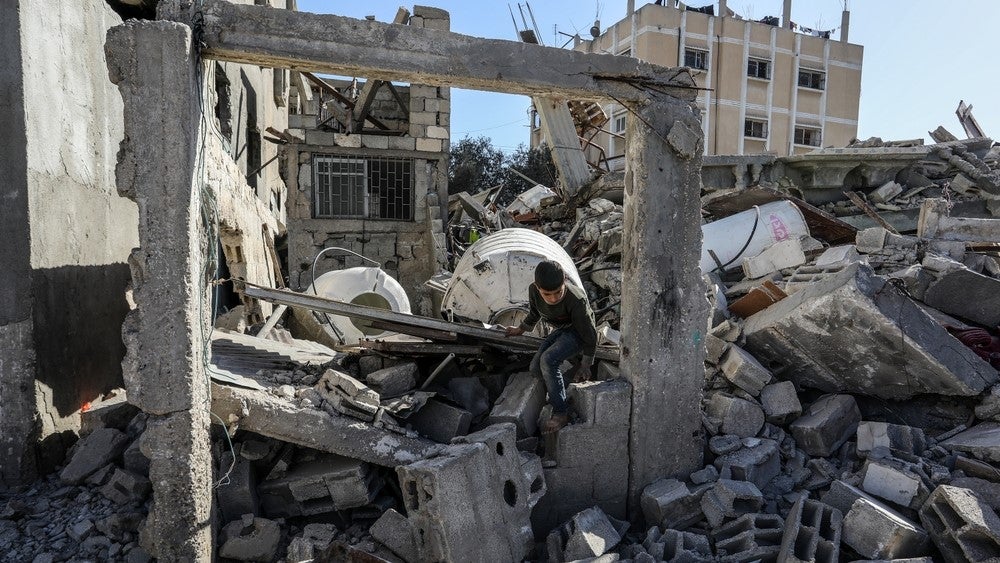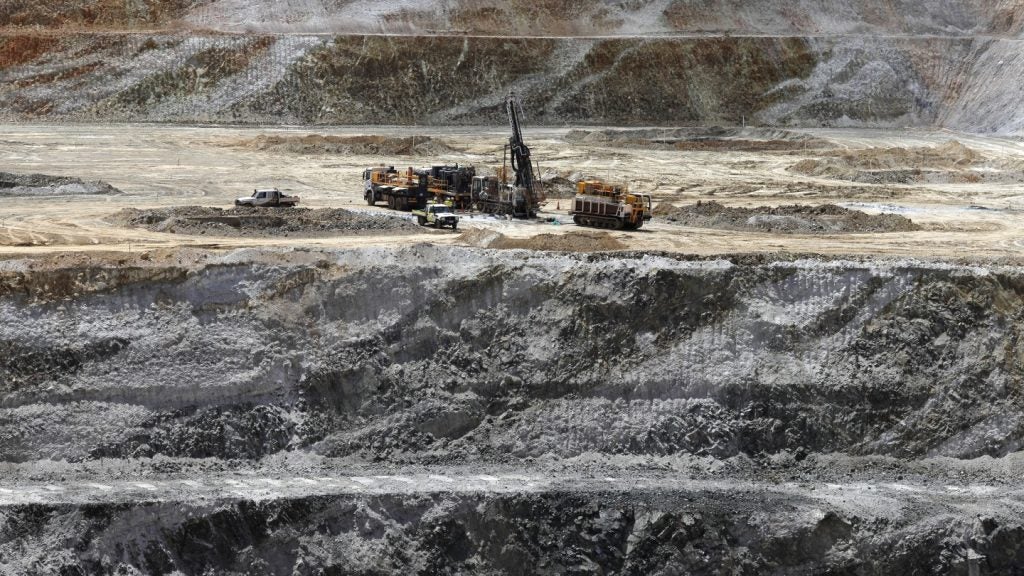Between 156,000 and 200,000 buildings were damaged or destroyed in Gaza in the first 120 days since the attacks by Hamas, which prompted a new chapter in the decades-old conflict between Israel and Gaza. This is according to new estimates published by Queen Mary University of London yesterday, assessing the carbon cost of the first half of the recent conflict, which is now 244 days old.
Rebuilding the damaged infrastructure in Gaza will release between 46.8 million and 60 million tonnes of carbon dioxide equivalent (tCO2e) – a mean average of 53.4 million tCO2e. The report noted that this “will entail total emissions figure higher than the annual emissions of over 135 countries, putting them on par with that of Sweden and Portugal.”
These figures account for the necessary steel, concrete and transportation of resources required for restoration and rebuilding, and assumes that each project embodies around 300 tonnes of CO2.
The bombardment has also resulted in vast amounts of debris, which the World Bank in March estimated to be at around 26 million tons (23,586,803 tonnes). It reported that “the removal of rubbles alone would cost around US$327 million and would require a years-long effort.”
By the end of January 2024, damage to Gazan infrastructure was worth around $18.5 billion, equivalent to 97% of the West Bank and Gaza’s total Gross Domestic Product (GDP) in 2022, according to the World Bank. Nearly 80% of this damage was concentrated in three areas: Gaza, North Gaza and Khan Younis.
The carbon emissions of the Israel-Gaza conflict itself are also significant, estimated to be greater than the annual emissions of 26 individual countries and territories.
The research identified cargo flights as the biggest contributor to these emissions, having released an estimated 159,107 tCO2e since October 7. Bombing and reconnaissance flights came in second with an estimated 157,410 tCO2e released, and tanks and vehicles followed with an estimated 91,999 tCO2e.
The report acknowledged the United Nations Environmental Programme most recent Emission Gap report, which notes that military emissions are usually “insufficiently accounted for”, but stated that, “even with incomplete data, researchers have found that militaries still account for almost 5.5% of global emissions.” It compares this to contributions from civilian aviation (2%) and civilian shipping (3%).
Concerns around the impact of conflict on the climate are often “less discussed”, something the report acknowledged: “This omission is understandable as the world remains focused on the acute death and suffering. However, military operations remain an under-analysed dimension of the climate crisis that will worsen suffering on vulnerable communities and the wider region as the impacts of global warming intensify.”














